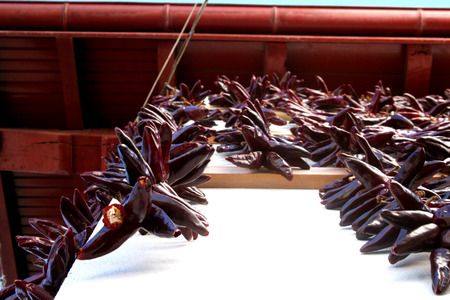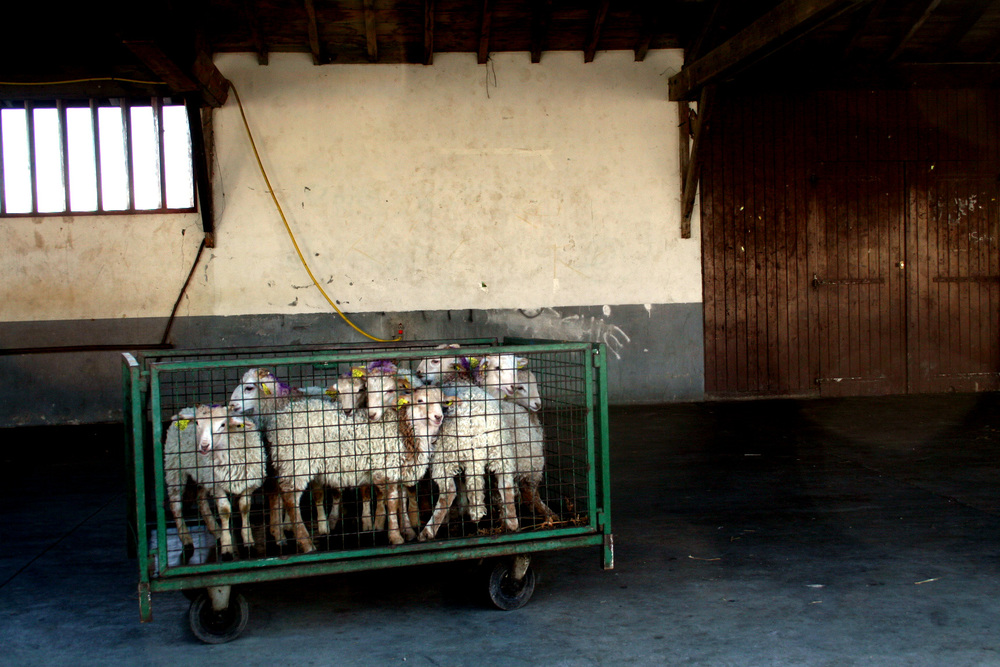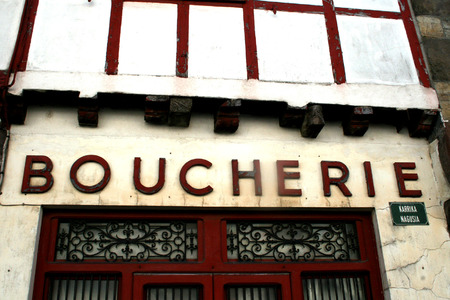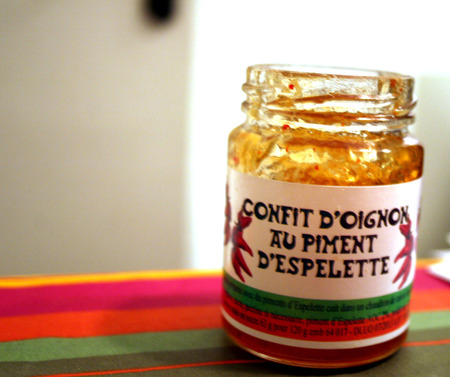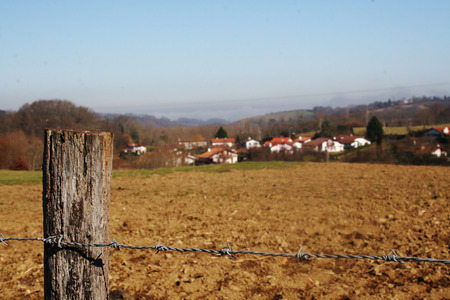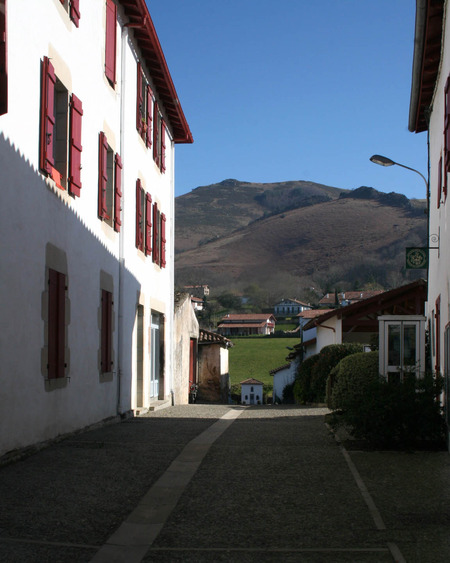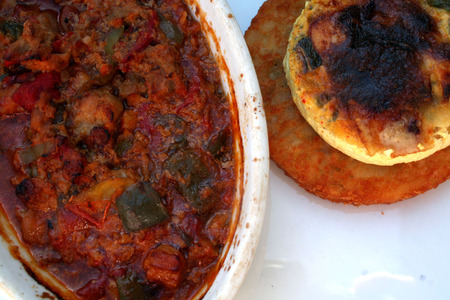on y va: espelette, france
Espelette is the home to the AOC (i.e. government sanctioned and protected) red Espelette pepper. Typically found in its dried, powdered form, this pepper is not as hot as cayenne, but provides a spicy kick to any dish. Its also got a touch of smokiness that you don't get with cayenne, or that you sometimes get in spades with pimentón, or Spanish paprika.
In this region, the cuisine and dishes take on a special, common character due to the widespread use of the pepper (in place of, for example, black pepper). The growing is restricted to the area around Espelette (or Ezpeleta, in Basque), and this concept of terroir is what makes the pepper all the more special.
The town itself is tiny, and all but dead in the winter weeks. Townspeople shrugged when we asked them where we could get a cup of coffee. "There's four cafés, but maybe just one is open," one lady said. "J'espere, pour vous." Yeah, me too.
It's becoming more widely known and used with American chefs today...you can find an Espelette aioli in many finer Mediterranean-inspired restaurants and bistros. The Espelette festival is in the fall, and this is when the summer's harvest of peppers is hung to dry on the houses around town. Then, the peppers are further dehydrated in heat and crushed to form the common powder.
In Espelette proper, however you can find all manners of products: pepper confit, tuna preserved in pepper sauce, pepper jelly, pepper chocolate bars, and even pepper infused wine. Yikes.
We finished up the day by driving through the rest of the AOC growing region, and stopping in Ainhoa for lunch. Ainhoa was even more charming, if possible.
With the repetitive sound of a pelota bounding off the fronton and echoing down main street, we sat outside in the incredible 65-degree weather, dining on an aperitif of vermouth, ham, guindillas and then salad basquaise (with ham, peppers, boquerones, cheese and haricots verts), and tasting axoa, a local specialty of ground meat and spices.

